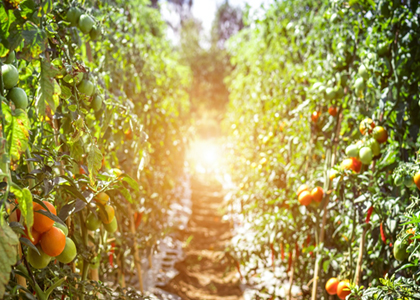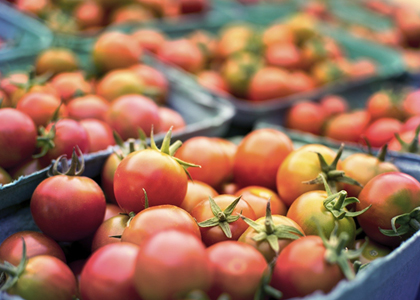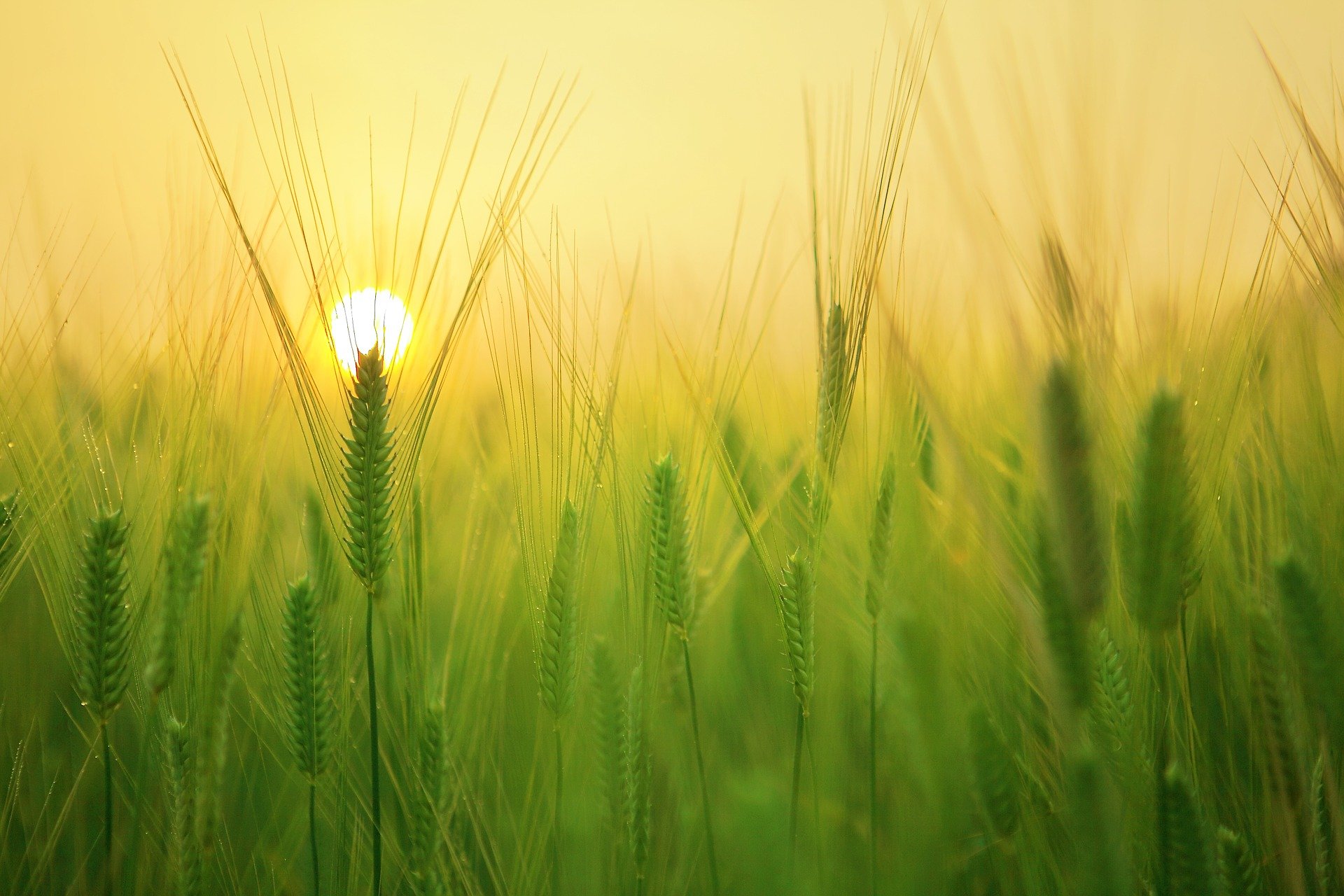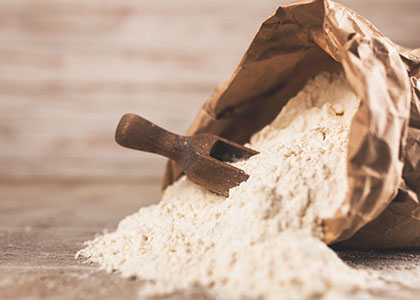Home / Blog / Inorganic & Organic Fertilizers
The use of animal manure and compost as organic plant fertilizers probably goes as far back as agriculture itself. Both inorganic and organic fertilizers go hand in hand with farming to improve the growth and health of plants. While soils naturally contain nutrients like nitrogen, phosphorous, calcium, and potassium, repeat cycles of crop plantation drain the ground of its stores. This is where agricultural inorganic and organic fertilizers come in to supplement soil of its lost nutrients and to aid the healthy growth of crops and grassland.
WHY DO FARMERS USE INORGANIC AND/OR ORGANIC FERTILIZERS?
Nutrients in the form of organic matter and plants can be added back to the soil through different sources. Native Americans would often bury fish in their corn plots which organically lent nutrients to the soil as the fish decomposed. Equally, farmers use crops like soybeans and alfalfa (legumes), that ‘pull’ (absorb) naturally occurring nitrogen from the atmosphere to place it in the soil for future (rotational) crop cycles.

Modern inorganic fertilizers and some organic fertilizers include nitrogen, phosphorus, and potassium as the three most important elements for plant nutrition. Of secondary importance are sulfur, magnesium, and calcium. Both inorganic and organic fertilizers are used for two main purposes:
- Working as additives to provide nutrients to plants.
- To enhance the soil’s effectiveness at water retention and soil aeration.
Agro inorganic and organic fertilizers can be applied to plants both as solids and liquids. Liquid nitrogen fertilizer is a popular example of the latter that is often used with other water-soluble agriculture fertilizers for its quick and effective absorption. Almost 90% of inorganic and organic fertilizers are commercially sold in powdered or granulated form. These inorganic and organic fertilizers are available from chemical and organic fertilizer suppliers as concentrates and can be diluted using water to make them soluble for easier coverage and quicker absorption. Inorganic and organic liquid fertilizers tend to consist of anhydrous ammonia, aqueous ammonium nitrate solutions, or urea.
LIST OF COMMON INORGANIC FERTILIZERS
For successful farming, agriculturists need to know about different inorganic fertilizers and their uses. The following inorganic fertilizers are popularly used across the industry:

Urea
The most widely used solid nitrogen inorganic fertilizer, urea is distributed in granulated form. It can also be mixed with ammonium nitrate and dissolved in water to form a urea ammonium nitrate solution. Urea reacts with water to form ammonia, which makes the nitrogen within the inorganic fertilizer available to the plant. Urea inorganic fertilizers deliver the highest amounts of nitrogen – about 46% and are, therefore, the most popular agriculture inorganic fertilizer in use.
Ammonium nitrate
Ammonium nitrate is another inorganic fertilizer that is typically available from chemical fertilizer suppliers in granular form. As another inorganic fertilizer that is popular with farmers it also provides a substantial amount of nitrogen to the soil. Most useful across specialty crops, like citrus fruits, and for fertilization across grassland for animal pasture, ammonium nitrate provides an approximate 33% nitrogen.
Ammonium sulfate
Ammonium sulfate is usually sold by commercial inorganic fertilizer suppliers as a solid. It is formed as a by-product from the waste generated by coke ovens when sulfuric acid is used to remove ammonia from coal. It delivers 21% nitrogen to a plant.
Calcium nitrate
Calcium nitrate contains 16% nitrogen in a nitrate form. Though less effective than other nitrogen inorganic fertilizers due to leaching when applied to the soil, calcium nitrate is used in large numbers across fruit and vegetable crops, as it provides an easily soluble source of calcium to calcium-deficient soils.
Diammonium phosphate
Diammonium phosphate is a commercially produced inorganic fertilizer that can provide up to 46% phosphorous to a plant. In addition, the ammonia component of diammonium phosphate also delivers around 18% nitrogen. A highly-water soluble compound, diammonium phosphate is often applied to crops in liquid form.
Monoammonium phosphate
Monoammonium phosphate is a phosphorous-heavy agriculture inorganic fertilizer that delivers slightly more phosphorus than diammonium phosphate – at approximately 48%. The amount of nitrogen though, provided through this inorganic fertilizer is somewhat less at 11%. This agriculture inorganic fertilizer is popular at the germinating stage of a crop cycle as the lower ammonia component lessens the risk of damage when applied to new seedlings.
Triple superphosphate
Triple superphosphate is often combined with nitrogen-based inorganic fertilizers to provide a better, broad-spectrum application. Available from inorganic fertilizer suppliers in granular form, triple superphosphate is spread directly onto the soil. While largely replaced by diammonium phosphate and monoammonium phosphate due to their easier storage requirements, and the availability of nitrogen within the chemicals, triple superphosphate is still in use, both commercially, and across smaller home agricultural applications.
Potassium nitrate
Also called nitrate of potash, potassium nitrate is popularly used across vegetable crops including celery, potatoes, leafy green vegetables, tomatoes, and several fruit crops. The nitrate components of this chemical inorganic fertilizer work well to support these crops through their growth. Potassium nitrate provides 44% potassium to crops.
Potassium chloride
Sometimes called muriate of potash, potassium chloride is a significant source of potassium in agriculture inorganic fertilizers. Applied directly to the soil, or combined with other mineral-based inorganic fertilizers, potassium chloride is also a highly soluble compound. It is often mixed with liquid nitrogen inorganic fertilizers before application, to provide 60 to 62% potassium to plants.
APPLICATION METHODS OF AGRO FERTILIZERS
Inorganic and/ or organic fertilizers are applied across all growing crops, either at the seedling stage or at some point in the plant cycle. Their usage is largely dependent on the kind of crop being cultivated and the fertility of the soil (determined through a soil test). Legumes for example, as mentioned earlier, pull nitrogen from the air around them, and generally do not require additional solid or liquid nitrogen inorganic or organic fertilizer.

Slow and controlled-release fertilizers
The use of inorganic agriculture fertilizers across crops calls into question the effects of biochemicals not only on the plant at different stages in its growth cycle but also on the soil and its surrounding environment. While the market share of the slow- and controlled-release fertilizer and organic fertilizer suppliers remains relatively low, they offer benefits by reducing the impact on the environment and the contamination of subsurface water. Slow-release and organic fertilizers also have the added advantage of reducing the ‘burning’ effect of excess nitrogen on plants. The polymer coating around this kind of organic fertilizer gives the solid tablets and spikes a staged, nutrient-release timeline as the shell encapsulating the mineral components and plant nutrients degrade at a specified rate. Sulfur is used as a typical encapsulation material, while thermoplastics are used in the diffusion-controlled release of urea.
Foliar application
This is when inorganic or organic fertilizers are applied directly to the leaves of a plant. Used almost universally to apply water-soluble, as well as liquid nitrogen fertilizers, this kind of application method is most popular across high-value crops like fruits, vegetables, and nuts. Its usage, however, is gaining increasing popularity due to its many advantages.
Solid vs liquid fertilizer
About 90% of inorganic and organic fertilizers are applied in solid form. Of the inorganic variety, the most widely used are urea, diammonium phosphate, and potassium chloride. Typically granulated or powdered, solid agricultural inorganic and agricultural organic fertilizers are available as ‘prills’ (solid globules). Liquid fertilizers comprise of anhydrous ammonia, aqueous solutions of ammonia ammonium nitrate, or urea. Commercially available in concentrated form, they can be diluted with water to form a desirable consistency for particular crops or added to the irrigation water (fertigation) for quicker absorption and wider coverage.
ADVANTAGES & DISADVANTAGES OF GRANULAR VS LIQUID FERTILIZERS
Granular Inorganic and/or Organic Fertilizers
Advantages:
- Easier to store.
- Slow-release granules help feed crops longer into the season.
- More efficient for pre-plant application (example: increase the fertility of soil before plantation).
Disadvantages:
- The high salt content can burn leaves and steer roots away from nutrients.
- Immobile nutrients such as phosphorus can’t get close to the roots because they can’t be carried in liquid form through the water.
- Each granule holds a nonuniform amount of nutrients.
Liquid Inorganic and/or Organic Fertilizers
Advantages
- Easy to use and engineered to deliver nutrition when the plant needs it.
- Plants grow faster, increasing the yield.
- Easy to handle when blending and applying. Mixes well with other soluble agriculture fertilizers and herbicides.
- Provides uniform application.
- Can be used for both start (seedling) and in-season (growth) applications.
- Used popularly and to great advantage across specialty crops like fruits, vegetables, and nuts.
- Diverse usage options across in-furrow, or through foliar applications.
- Deliverable directly through an irrigation system.
- Cheaper and the safer choice for application directly to seeds and leaves.
- Usable in smaller amounts for delivering specific, quantifiable nutrition to a plant which helps the soil and the environment by limiting the polluting effects of chemical compounds through environmental run-off and soil leaching.
- Stops overfertilization by delivering smaller amounts that do not cause fertilizer burn.
Disadvantages:
- Needs to be carefully stored. Can be expensive to convert equipment to handle liquid fertilizer.
- More susceptible to volatilization and loss.
USES & EFFICIENCY OF INORGANIC AND/OR ORGANIC LIQUID NITROGEN FERTILIZER
Liquid nitrogen inorganic fertilizer is generally cheaper than the granulated, solid version because of lower industrial production costs. Although highly corrosive if not stored properly within specially built vats, the handling, usage, and efficiency of liquid inorganic and/or organic nitrogen fertilizer with other soluble inorganic fertilizer makes it not only safe but also very versatile.
Commercially available liquid nitrogen inorganic fertilizer can contain approximately 39% nitrogen, which amounts to more than granulated ammonium nitrate, which offers only 27% nitrogen. Liquid nitrogen inorganic fertilizer is also generally considered to be safer for animals grazing on grassland sprayed with it. Grassland, as well as crops, have minimal to no scorching from burning when sprayed with liquid nitrogen inorganic fertilizer, especially if used with a little dilution and delivered through low pressure.
Liquid nitrogen inorganic fertilizer also delivers with accuracy – particularly on the headlands/ peninsulas. With land that is not uniform, it is virtually impossible to evenly spread granular inorganic fertilizer as granules can fall in concentrated numbers into ditches and soil troughs, damaging plants.
Flowing evenly through a single-manned automated sprayer, liquid nitrogen inorganic fertilizer application also helps reduce labor costs and hours. It can also be applied to plants through wet or windy conditions.
Liquid nitrogen inorganic fertilizer use across grassland
Fertilization, especially with nitrogen, represents the biggest, single cost in grass production for animal grazing. However, as liquid nitrogen inorganic fertilizers can be commercially produced at lower prices than granulated nitrogen inorganic fertilizers, the price per unit of nitrogen to the farmer is also lower. Equally, liquid nitrogen inorganic fertilizers uniformly distribute nutrients across a field, allowing farmers to work across larger grazing areas.
AGRI – A 40-YEAR OLD FARMING AND AGRICULTURAL SUPPLIER
Agri is one of Saudi Arabia’s leading suppliers of agricultural products. A part of the ABT Group, Agri is one of the oldest and best-known agricultural trading houses in the region. The company has been a pioneer in providing agricultural distribution across the region – enabling growth and prosperity for farmers in the Kingdom.
Working with top-quality international and local brands, the company strives to provide the best agricultural inorganic and organic fertilizer products, that are readily available and competitively priced.
Agri provides a wide range of agro inorganic and organic fertilizer products, which include:
- Linah Fertilizer is specially formulated keeping in mind the nutritional requirements of date palms. The potassium-rich formulation improves growth, tree health, and fruit yield.
- Agrisole, water-soluble fertilizers contain nitrogen, phosphorous, and potassium compounds that have wide application and usage across many plants and crops. The special formula for Agrisole delivers on measured uptake, improved absorption, and healthy plant growth.
- HumiXtract Fertilizer is an organic fertilizer that slow-release nutrients while improving soil structure and its ability to hold water. HumiXtract’s slow-release formula prevents over-fertilization and eliminates the risk of toxic buildups of salts and chemicals. Biodegradable, sustainable, and environmentally friendly, HumiXtract delivers on long-term crop health and soil viability.
To learn more about best-use agricultural inorganic and organic fertilizers and inorganic and organic fertilizer applications, Agri products and services, or to see how the company can help you achieve your goals, click here.












